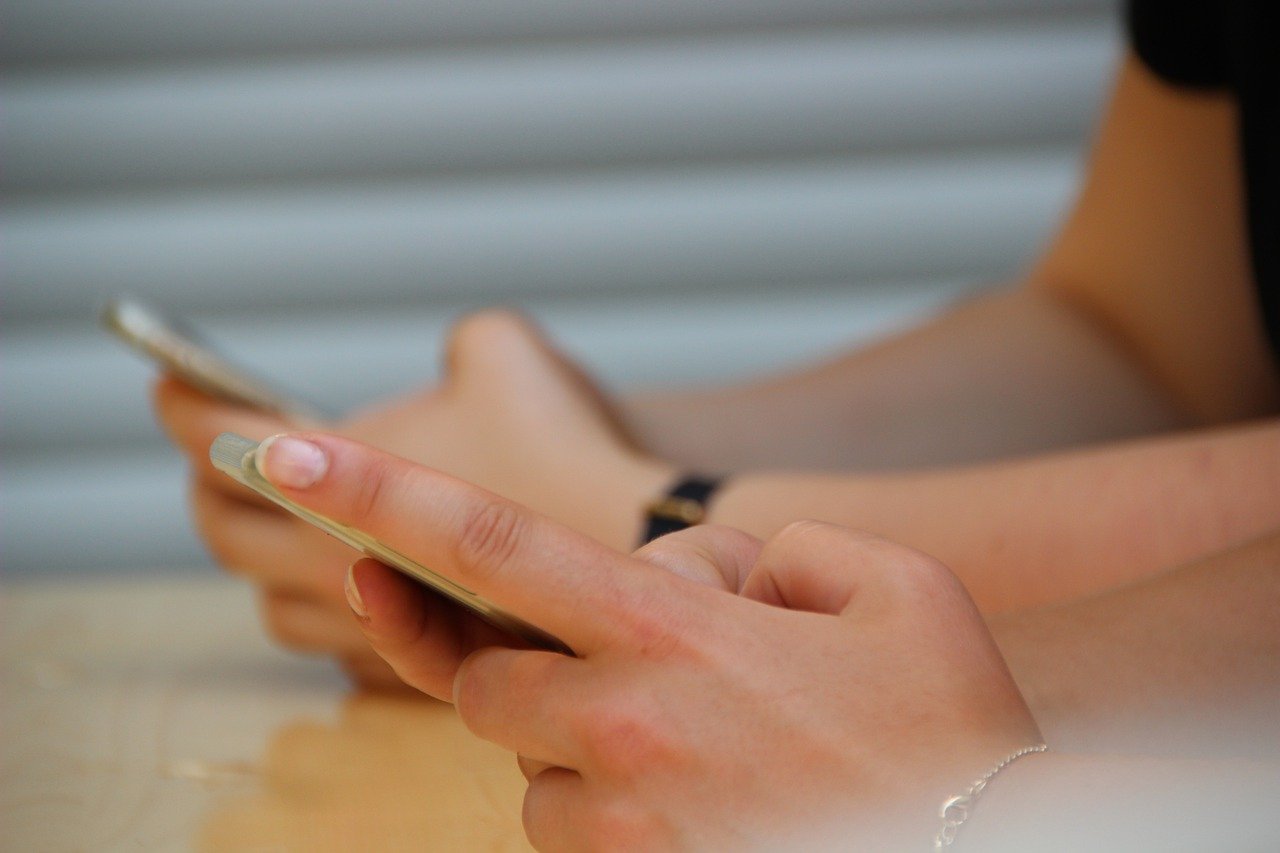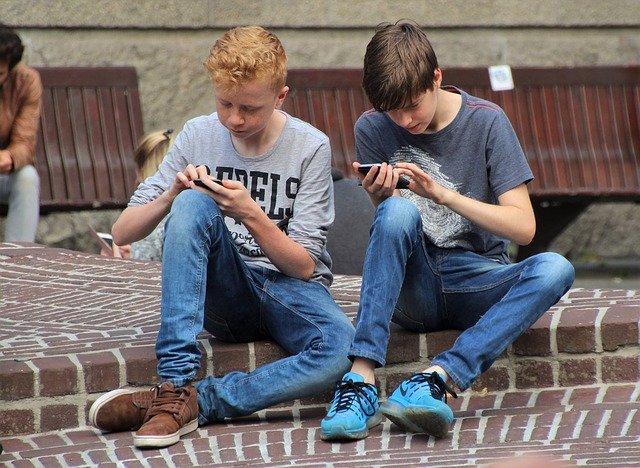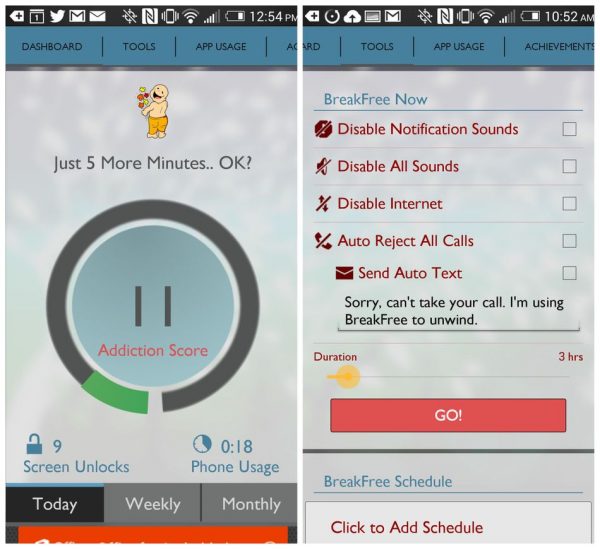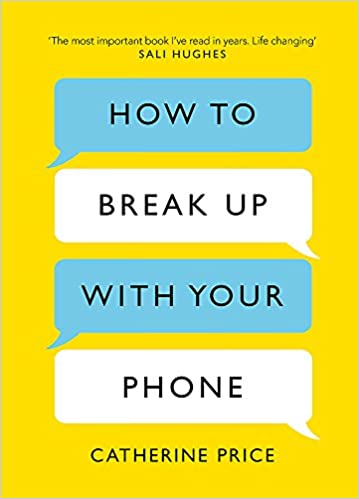
Credit: Pixabay/CCO/Public Domain
What complicated relationship teens have with technology……both divine and devilish!
Technology has been manipulating their lives beyond imagination. Something to live for and something to die with….The youth are naturally programmed to use technology, almost by birth or even before that, thanks to the input by their mothers!
The cellphone dictates their social life and standing, which is the DNA of their interpersonal relationships.
Technology has created a lust for gadgets that have led to a decline in in-person social interactions. The Apps as they are called are status symbols for the youth, young at heart, and a de novo category now aptly named “with it” or trendsetters.
These props help them to gain a place of pride and respect by creating an identity among their peers and are objects to be exhibited, proclaimed in ownership, and what have you!
Additionally, the cellphone has insidiously penetrated the social life of teens and invaded their academics and learning activities suppressing thought and creativity. It is so bad that even with their friends by their side, the cellphone dominates the focus.
The smartphones give them a high, makes them happy. You can see that on their faces every time the screen lights up with a message. Teens staring into the devices and texting frantically or recklessly sharing pics on social media is a common sight.
For them, if you are not on social media, you don’t exist! yes as simple as that. It is a space that allows teens to connect with friends on their own terms, without any adult supervision in public. A German online portal for statistics estimates that 58% of 11 year-olds and 93% of 15 year-olds have a mobile phone (Statista, 2019)
Especially in the era of the pandemic, it is the fulcrum of the stay at home, work from home and online lessons and such school-oriented pursuits. Teens have been using Apps, such as Skype, Zoom, FaceTime, to attend online classes and communicate with friends during the pandemic.
No surprise at all that today’s teens face intense and often alarming levels of pressure. At times their phone use is tied to recreational activity and may contribute to stress relief, but at other times these teens use their phones to keep up with the aggressive and go-getting pace of their lives.
Ensuring that technology use does not result in more stress for teens is definitely a formidable task. The writing on the wall is that, in this contemporary era, it is just not possible to press the “delete’ button as far as technology is concerned.
Yet the dilemma for parents is to wonder how much to police and where to draw the line. Helping them navigate this virtual space and engage with technology safely is very important.

Image by natureaddict from Pixabay Representative image
If one were to colloquially define the term ‘addiction’ as intense dependence on a particular thing and further include the quality habit-forming in that definition, then there is a term to be coined, namely, “smartphone addiction”.
Furthermore, the numbers of teens in its throes are lamentably growing exponentially by the minute. The unenviable tribe is often called digital junkies.
Talking of social distancing, in a tongue in cheek manner, it is practically impossible to connect to an individual who just cannot peel his eyes away from his phone.
Warning signs of smartphone overuse :
- Constantly comparing yourself to others.
- Most discussions are about other people’s posts, tweets, etc.
- Feeling restless/anxious about what to post or reply to on social media.
- Friends and family complain that you seem lost or preoccupied when they are talking to you.
- Using the smartphone phone at bedtime before falling asleep and using it again immediately on waking up.
- Feel Nomophobic – ‘No Mobile Phone Phobia’ a term used to define the anxiety and restlessness one goes through when one cannot access the phone.
Smartphone usage – What does the research say?
In 2016, the Common Sense Media Report sounded the alarm bell. A well –crafted survey found that at least half the teens felt that they found their mobile devices indispensable, while nearly 60 percent of parents were quite sure that children were addicted to their technology-driven devices.
Checking posts on the phone by the hour, a compulsive need for messages on social- networking media, and an absolute need to reply to text messages have almost become routine activities not only for the teens but as many parents ruefully admitted, for them as well.
A couple of years later, the Pew Research Report studied Internet usage habits among teenagers and sought to compare the two genders.
Interestingly, females topped the cadre as compared to males. Parents themselves have to be technology savvy to understand the scope of each facet of this new era tool.
For example, a lot of parents were completely unaware that YouTube could be used for academic and leisure purposes equally well. Hence, the teenager should be taken into confidence before he is disciplined about his use of cellphones.
Scary smartphones addiction statistics:
According to a study published in BMC Public Health, it was found that heavy users of screens such as tv and smartphones for an average of 17.5 hours per day—reported the least healthful dietary patterns and the poorest health-related characteristics.
According to a report released by the National Safety Council, 26 % of all car accidents in the US are due to the use of cellphones.
Jean M. Twenge a professor of psychology at San Diego State University in an article titled ‘Have Smartphones Destroyed a Generation?‘ writes “Rates of teen depression and suicide have skyrocketed since 2011. It’s not an exaggeration to describe iGen as being on the brink of the worst mental-health crisis in decades. Much of this deterioration can be traced to their phones.”
Eyes and smartphones
There are reports of a rising number of patients seeking help with eye problems caused due to increased screen time during the pandemic.
A study conducted on Chinese schoolchildren found that too much time spent working with the eyes focused on something less than 20 centimeters away was associated with myopia.
Another study done by researchers in Ireland found that greater than three hours of screen time per day increased the odds of myopia in school-going children.
Researchers in Denmark found that myopia risk approximately doubled in teenagers who used screen devices exceeding six hours per day.
Mental health effects of prolonged online activity
For a while now, the condition of smartphone and internet addiction among teenagers is recognized as a behavioral disorder.

Image by María Prieto from Pixabay Representative image
An indicative list of traits in the inflicted teenagers would include many of the following…..insomnia, dysphoric mood swings, a conscious and subconscious withdrawal from the outer world, increased anxiety, and undesirable changes in the personality of the teenager.
The individual shows fitful spells of anger, a noticeable change in self-worth, and despair that has to be identified and dealt with as an immediate priority.
The overall health profile and the holistic approach towards food shows a marked deterioration. The facial expressions of the inflicted teenager are listless and vague. The person complains of persistent fatigue and loss of energy.
A recent study on smartphone usage conducted by Lancaster University’s Department of Psychology had surprising results. It was found that the time spent on the smartphone was not related to poor mental health. According to the study mental health was associated with concerns and worries felt by participants about their own smartphone usage.
Other symptoms of smartphone usage
The other symptoms include a sequential loss of eyesight (known as Digital Eyesight Syndrome) and extreme stiffening of muscles and posture problems(known as Textual Neck or Text neck).
They may also suffer from Attention Deficit Disorder which may manifest itself in accidents while driving because the subject was using the cell phone while driving.
Withdrawal symptoms from smartphone addiction
Withdrawal symptoms ( both psychological and physiological) are common when one is restricted access to a smartphone. These may include:
- Moodiness
- Restlessness and Anger
- Irritability
- Difficulty concentrating leading to poor academic performance
- Physiological symptoms such as sweats, nausea, insomnia, and headaches.
The fear of missing out (FoMO), can explain the withdrawal symptoms. FoMO is basically the fear of missing out on important information or a feeling that that one is deprived of the enjoyable experiences others might be having.
Smartphone addiction-Professional assistance
This addiction to smartphones and technological gadgetry has to be first recognized and identified.
Subsequently, the inflicted individual has to be offered a sustainable and constant support system.
The requirement of a pivotal role by parents, family, and teachers can never be underestimated. There is an absolute need to exercise tact, kindness, and TLC(a clinical Acronym in Patient care that stands for Tender Loving Care). The entire process of weaning and deaddiction has to be more of an inclusive group activity.
Recognizing that in a nutshell, one can neither lead a life without technology nor can one fit into the new world order without it. Hence, the appropriate strategy would be to empower the teenager, and not restrict him. Few pointers would include,
- A protracted plan making activity, an all-rounded education about the boon and the bane of the smartphone.
- Promoting awareness of stress and burnout resulting from overuse.
- Monitoring of the usage timings and leading by example are some productive solutions. The generation of cell-free activities and read-aloud sessions of paperbacks as a family have also shown promising results.
- Getting them to take frequent breaks between online lectures/classes.
- Create awareness of the physical and emotional consequences of spending excess time on smartphones.
- Getting them to stop using the phone at the dinner table and at least two hours before bedtime can bring in positive results.
- It is usually a feeling of loneliness and boredom that triggers smartphone usage. Try to address this issue with healthier alternatives such as exercising, socializing with friends, reading a book, or doing something creative.
Smartphone addiction as a medical or psychiatric condition:
Concrete and formalized therapy modes are available for managerial and curative purposes to overcome this addiction. Individual process therapy and cognitive behavior therapy are two such therapies.
Cognitive behavior therapy can help one learn healthier ways of coping with stress, anxiety, or depression that may be caused by smartphone use.

Image: Breakfree
There are some Apps designed to curb the use of gadgetry…..they are known as Breakfree and Menthal.
Overuse of the smartphone, dangerously makes the teenager prone to cybercrimes like cyberbullying and sexting.
There are rehabilitation centers now available for the lifestyle intervention of teenage cell phone addiction subjects.
This is with the view of helping them with long term solutions. Interestingly, the rehabilitation process is executed in a long term perspective. It is aimed at including parents, family, peers, and is a holistic and rounded educative exercise.
A number of facets are addressed first person where the resource people are none other than cellphone addicts who have conquered this huge struggle.
It is obvious that such an approach is much more convincing and impactful. Moreover, the teenager is focussed on individually and his special needs are discussed with genuine concern and sincerity.
Naturally, gradually, the teenager starts feeling reassured and has a growing sense of belonging and faith in the curative system. This mind-set definitely plays a nodal part in the quest for wellness and de-addiction.
Though, the Diagnostic and Statistical Manual of Mental Disorders, 5th Edition (DSM-5) has not pronounced this condition as a full-blown tangible psychological disorder, yet, treatment for teen smartphone addiction in some specialized rehabilitation centers is available.

Credit: Pixabay
References have cited prototype models like the Paradigm Malibu Adolescent Treatment Program, Restart Center, and a very popular and well-accepted model known as Family Boot Camps.
These are in fact, torchlights for similar enterprises to be conceived, established, and provided to the required youth. They pride themselves in the methodology used by them to design in house and signature activities and programs. These are totally need-based and are user friendly.
These programs contribute to an increase in self-confidence and a feeling of happiness. Certified staff is engaged to provide counseling, individual assessments and evaluation, and even treatment of inflicted teenagers in the OPD(Out Patient Mode).
There are qualified life skill coaches whose vocation is to draw out the best of the teenager’s potential through interpersonal and communicative approaches.
The present approach to gaining a better understanding of the addiction is to study the factors which may contribute to the addiction. Such research has yielded interesting results. It is now clear that teenagers with already existing disease conditions like obesity, allergy, asthma are more likely to get addicted to mobile phones.
Boot camps are all-encompassing when aimed at the family. There are exciting outdoor expeditions that bring out the best in everyone and promote togetherness and a much-needed sense of belonging in the teenage addict.
It slowly dawns on everyone concerned that the world is a huge and exquisitely beautiful place waiting to be explored and there definitely is a life worth living ….beyond the shackles of technology. This indeed is the first ray of sunlight!!
References
- ReSTARTCenter for Technology Sustainability. (2015). Retrieved November 30, 2015, from http://www.netaddictionrecovery.com/
- Camp Grounded – Summer Camp for Adults – Digital Detox. (2014). Retrieved November 30, 2015, from http://campgrounded.org/
- Hong S-B, Zalesky A, Cocchi L, Fornito A, Choi E-J, Kim H-H, et al. (2013) Decreased Functional Brain Connectivity in Adolescents with Internet Addiction. PLoS ONE 8(2): e57831. doi:10.1371/journal.pone.0057831
- Kim, H. (2013). Exercise rehabilitation for smartphone addiction. Journal of Exercise Rehabilitation,9(6), 500-505. doi:10.12965/jer.130080
- O’keeffe, G., & Clarke-Pearson, K. (2011). The Impact of Social Media on Children, Adolescents, and Families. Pediatrics,127(4), 800-804.
Also read Amount of time spent on the smartphone not related to poor mental health.
The author acknowledges the use of authentic medical literature from reputed media to structure this article.
The contents of this article are not meant to be a substitute for medical advice, diagnosis, or treatment, and should not be construed or treated as such. Always seek the advice of your physician or another qualified health provider with any questions you may have regarding a medical condition.
Sign up for the QuackTrack.org newsletter below!
















Tvi
December 2, 2020 at 7:26 pm
Great article Ma’am